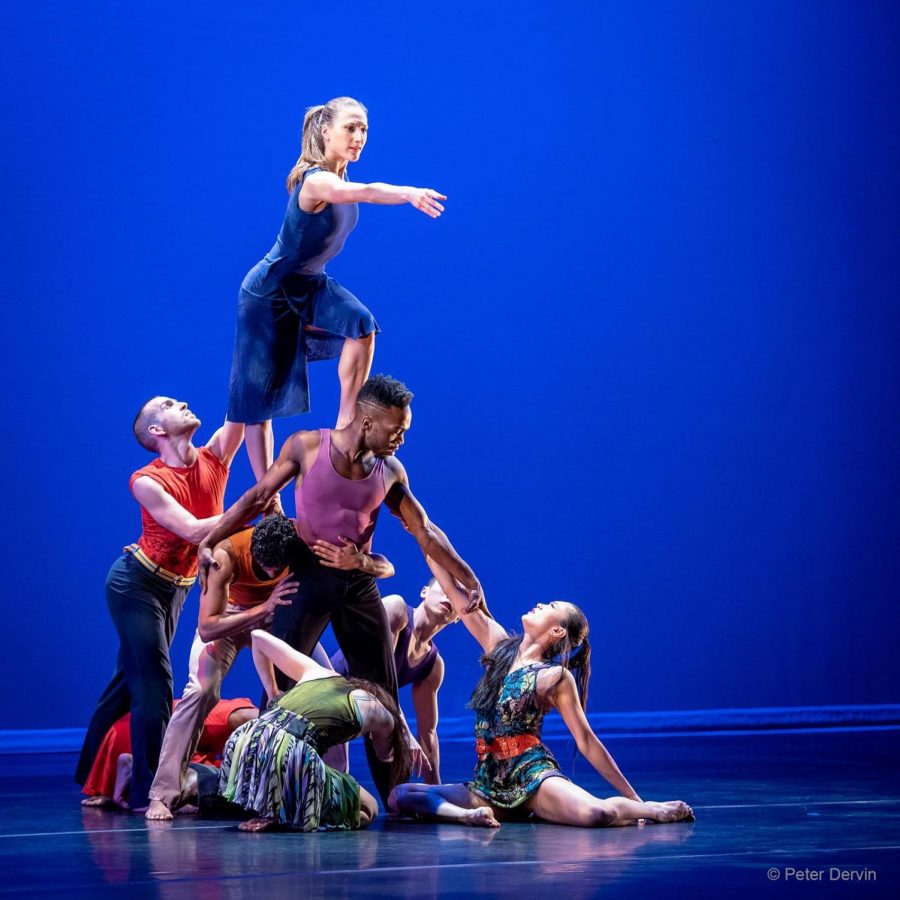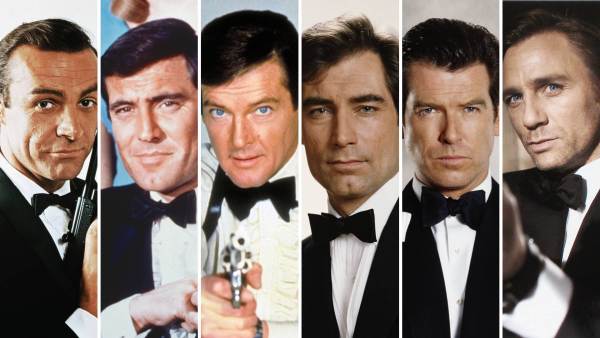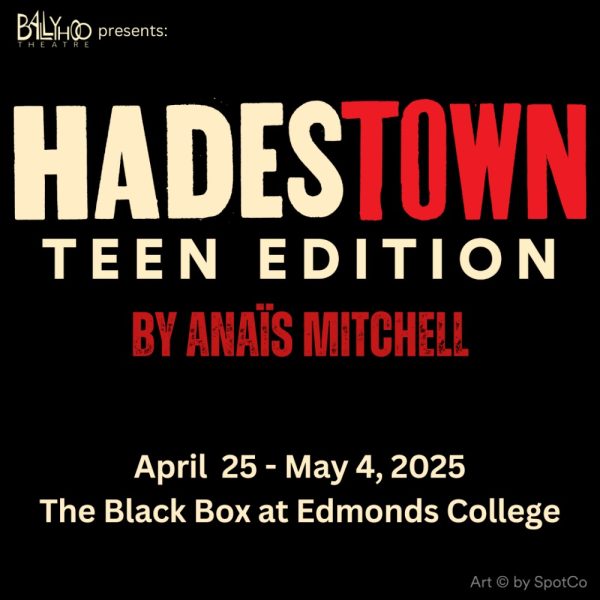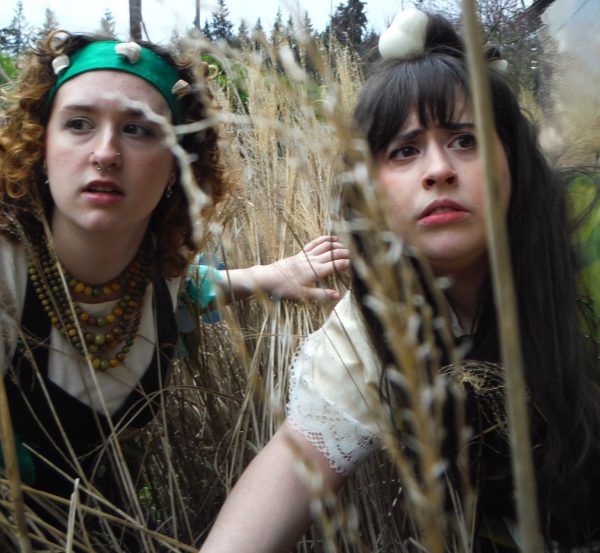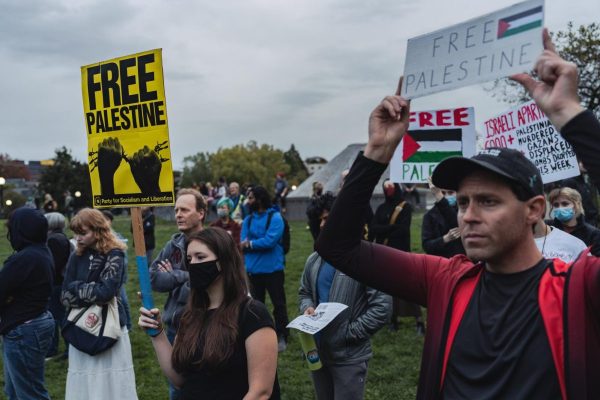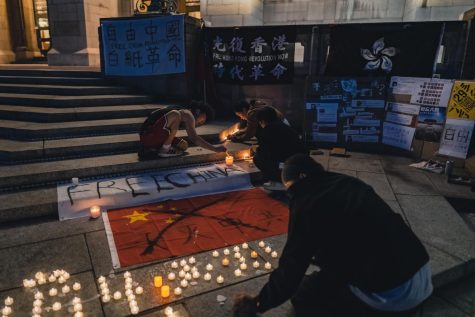Asian-American Immigrants Add a Twist to Modern Dance
Rashid Lewis, Greta Campo, Sonny Shiu, Candace Jarvis, Evan Stewart, Yuka Notsuka, Cara McManus and Patrick Piras
“A Quest for Freedom” is a contemporary dance performance with an American-Asian twist, held on Feb. 23 at the Edmonds Center for the Arts.
Nai Ni Chen Dance Company had collaborated with the classical piano trio, Ahn Trio, in the Asian-American contemporary dance production. Before the show started, two sisters of the Ahn Trio (Angella and Maria Ahn), as well as Nai Ni Chen sat down for 30 minutes for a casual talk show with the audience. During the pre-show, the discussed their lives and experiences as it relates to music and the arts.
Nai Ni Chen had gone through intense training since she was 13 years-old, and she founded her own dance company in America. When she spoke about how her immigration from Taiwan to America affected her dance style, she it as a “blessing to have that background and combining it with western training.”
The three sisters who made up Ahn Trio, originated from Seoul, South Korea and immigrated to New York City in 1981. The sisters have been pursuing their passion of music for almost 30 years, playing the piano, cello and violin together. Their most recent album, “Blue,” which was named after and composed for their beloved nephew, was incorporated into the production.
The performance was a modern dance with a Asian-American spin. The choreography and music were all inspired by Chen and the Ahn Trio’s experience with leaving their homes and families in pursuit of their dreams, as well as freedom, in America. It consisted of 11 pieces, with a 15-minute intermission between. Overall, the performance duration was about two hours long.
The opening act consisted of Nai Ni Chen herself, walking across the stage with a parasol laying on her shoulder, while wearing a flowing white dress. Pianist of the Ahn Trio, Lucia, performed an excerpt of a song called “Sounds heard from the Moon” originally by Jiha Park. Lights were dimmed to a soft blue, overcasting Chen, as she danced gracefully and elegantly across the stage. As the lights dimmed to total darkness, the opening was over and the crowd clapped, murmuring about her graceful appearance.
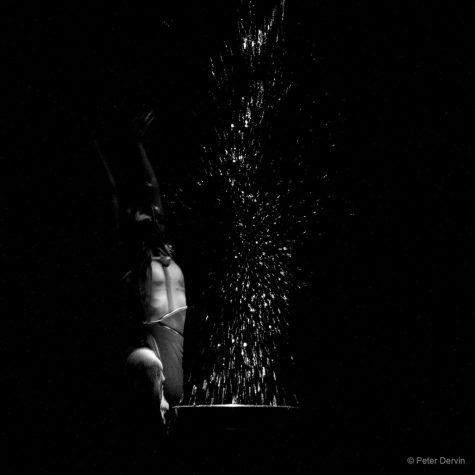
Following the opening was a piece titled “Concrete Stream”. As the lights brightened, there was a bucket on stage, as well as a female dancer, crouched over the bucket. To the audience’s surprise, she began to splash around the water that was contained in the bucket. Throughout the entirety of the piece, dancers began to walk onto stage and surround the dancer. They took turns stepping into the bucket and throwing the water into the air.
For this piece, Chen drew inspiration for the choreography from a Persian poem. From the poem, she believed that the “connection with nature is beautiful, and water is important,” because “water is the beginning of human civilization … one day it will run free into the forest.” These ideas were reflected into the piece by the dancers’ flowing dance style and the incorporation of the water from the bucket.
The next several of pieces were sadder and more intense, to represent the distresses of their dreams being restricted by their communities.
After the intermission, the dancers wore modernized clothing and films played in the background of some pieces to provide context that the story now took place in New York. This was representative of the Ahn sisters’ experience in America.
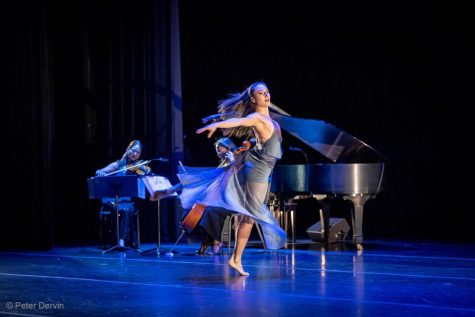
One especially interesting piece after the intermission was titled “Alone but not alone.” It started off completely silent, as Patrick Piras laid on a bench, with only the backlighting illuminating him. He began to seem confused or conflicted with himself, as he danced normally, then stopped midway to collapse back onto the bench. The entire performance had conflicting undertones, but it conveyed being lost and lonely in the new and large country.
The last act of the production was titled “Tomorrow,” with the Ahn Trio performing a song named “Candybox” by Chiel Meijering. Dancers who performed during this piece were extremely dynamic, wearing red and white clothing. Chen said that this piece was conveying the “courage, strength, and positivity” that drove her to her dreams. The dancers were dancing so intensely that the audience could see the glimmering sweat on their faces.
The finale ended fantastically, as the crowd held a standing ovation for the dancers and musicians. All of the dancers and the Ahn Trio were smiling and bowing as the audience showered them in cheers and applause. One audience member even gave the Chen a bouquet of purple flowers, which resulted in a brighter smile from her and louder cheers.
Overall, seeing the performance in person was surreal, hearing the raw sounds of the instruments and seeing the different dance styles of all the pieces. The music felt as if it was resonating around the room, and each song left a different impression. The combination of the music and dances communicated a different type of message or story in each piece. As you watched the show, you would begin to form your own stories from it. As Chen said, the performance was “a treat for the ears and the eyes,” but it was also a treat for the mind.

